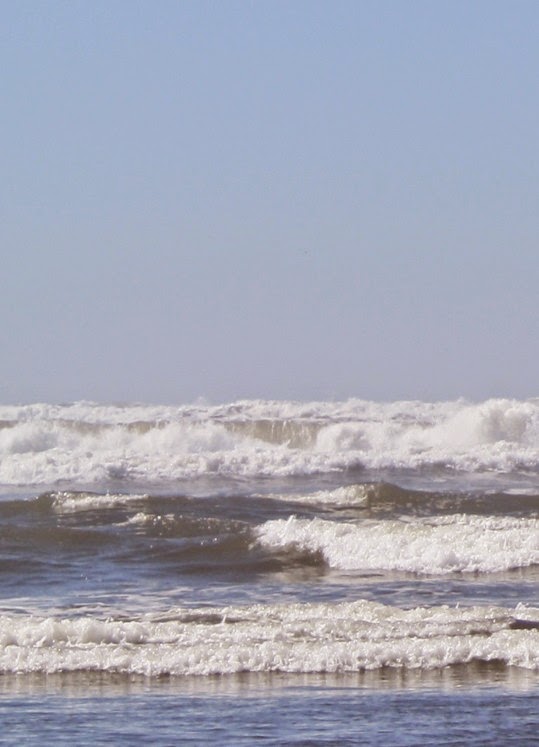(Note: readers new to zazen may find How to Meditate useful.)
"Meditation is simple," says Father Laurence Freeman, director of the World Community for Christian Meditation. "That is why it so easily becomes complicated." He's right; the practice of zazen is so straightforward, so quickly mastered, that people want to fill it with something. Because if there isn't more to it, then what are you supposed to, like, do?
You want to avoid this mind. But obstacles do come up, and the benefit of others' experience can be helpful in overcoming them. So this week I'm posting some techniques that have been effective for me in those situations. None of them are "have to"; all of them are "choose to." Even: "choose not to."
o Sometimes it's difficult to get your head on the right frequency, even after the standard beginning ritual of fixing the eyes on the horizon and three followed breaths. Early in my practice somebody suggested I add the following: hold gassho while following three more breaths, saying inwardly "May I sit" on the in-breath and "Just sit" on the out-breath.
o Later I added "5 Ws and an H", as a means of anchoring myself in reality before entering formal zazen. So after the prayer above, I rest my hands palm down on my knees ("in-the-world" mudra), and pose the following koans – questions on the in, answers on the out:
o Zenners usually meditate eyes half-open, and if we can trust our statues, the Buddha did too. But it's not a requirement, and sometimes (to centre the mind; in bright or distracting surroundings; under turbulent emotions; maybe it's just better for you) it's useful to close your eyes for part or all of the sit. Go ahead; nobody's watching.
o Visualisations can also help usher out nagging thoughts, especially for beginners. Two that work for me:
•Imagine dandelion fluff floating off on the wind.
•Imagine you're sitting at the bottom of a lake and the thoughts are air bubbles, rising up and away. (I picture myself at the bottom of the ocean in front of my house, just beyond the breakers, on a sunny summer day. The roiling water mimics the whirling inside my skull.)
o If strong emotion defeats the 1-through-10 mantra, "don't know" is often an effective replacement.
o At the end of a sit, I hold gassho again for three breaths, saying "Thank you" (for the practice) both in and out. Then I rest my hands on my knees and go through 5-Ws-and-an-H again to finish. The response to each question is still "I don't know", but after 40 or 50 minutes of zazen the answer feels palpably different.
May these tips assist others with their practice.
"Meditation is simple," says Father Laurence Freeman, director of the World Community for Christian Meditation. "That is why it so easily becomes complicated." He's right; the practice of zazen is so straightforward, so quickly mastered, that people want to fill it with something. Because if there isn't more to it, then what are you supposed to, like, do?
You want to avoid this mind. But obstacles do come up, and the benefit of others' experience can be helpful in overcoming them. So this week I'm posting some techniques that have been effective for me in those situations. None of them are "have to"; all of them are "choose to." Even: "choose not to."
o Sometimes it's difficult to get your head on the right frequency, even after the standard beginning ritual of fixing the eyes on the horizon and three followed breaths. Early in my practice somebody suggested I add the following: hold gassho while following three more breaths, saying inwardly "May I sit" on the in-breath and "Just sit" on the out-breath.
o Later I added "5 Ws and an H", as a means of anchoring myself in reality before entering formal zazen. So after the prayer above, I rest my hands palm down on my knees ("in-the-world" mudra), and pose the following koans – questions on the in, answers on the out:
Then I take dhyana mudra and commence typical 1-through-10 zazen.
Question: Answer: Who is [your name]? I don't know. What's asking? I don't know. When is now? I don't know. Where am I? I don't know. How did I get here? I don't know. Why am I here? I don't know.
o Zenners usually meditate eyes half-open, and if we can trust our statues, the Buddha did too. But it's not a requirement, and sometimes (to centre the mind; in bright or distracting surroundings; under turbulent emotions; maybe it's just better for you) it's useful to close your eyes for part or all of the sit. Go ahead; nobody's watching.
o Visualisations can also help usher out nagging thoughts, especially for beginners. Two that work for me:
•Imagine dandelion fluff floating off on the wind.
•Imagine you're sitting at the bottom of a lake and the thoughts are air bubbles, rising up and away. (I picture myself at the bottom of the ocean in front of my house, just beyond the breakers, on a sunny summer day. The roiling water mimics the whirling inside my skull.)
o If strong emotion defeats the 1-through-10 mantra, "don't know" is often an effective replacement.
o At the end of a sit, I hold gassho again for three breaths, saying "Thank you" (for the practice) both in and out. Then I rest my hands on my knees and go through 5-Ws-and-an-H again to finish. The response to each question is still "I don't know", but after 40 or 50 minutes of zazen the answer feels palpably different.
May these tips assist others with their practice.


0 comments:
Post a Comment